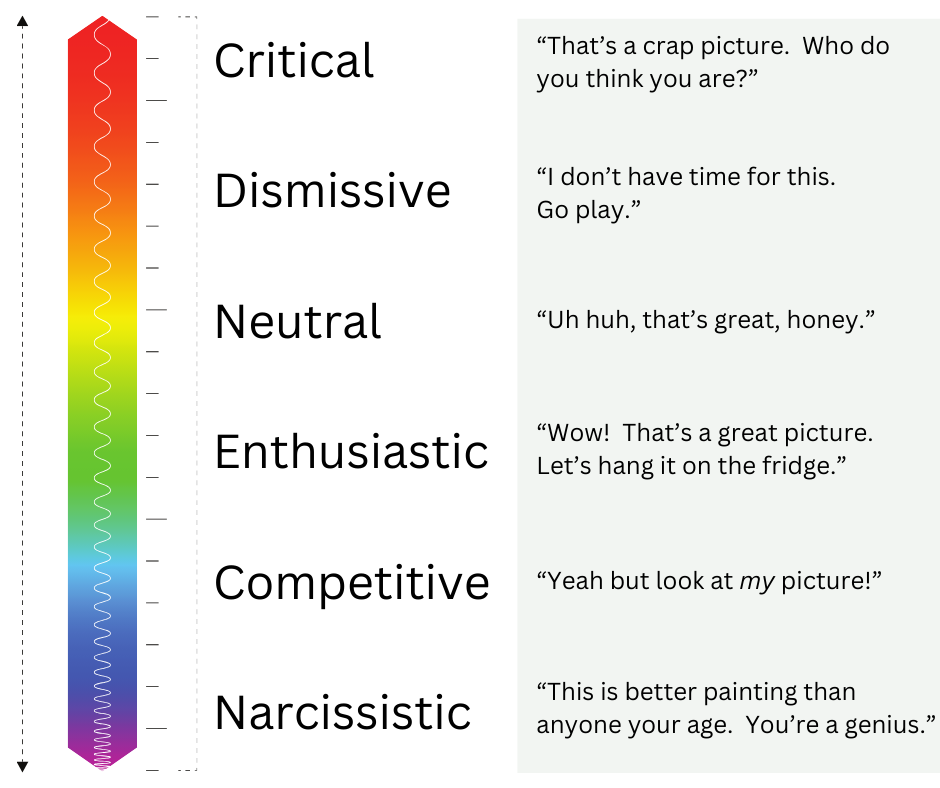Look at My Picture: What it Means to Be Seen
I used to joke that being seen was my love language. Now I'm trying to be a little ray of sunshine for myself.
One of my favorite quotes is by child psychologist Donald Winnicott: "It is a joy to be hidden and a disaster not to be found." Waiting behind the door of his office, just as his client reached for the doorknob, he'd open the door and greet them. He was teaching his client that your needs can be met exactly as you have them. Maybe it was silly, but his aim was giving others the experience of being seen.

The Sunshine of Being Seen
What does it mean to be seen? That phrase gets thrown around a lot as in, "I feel like he really sees me," or "I see you, I see your soul." I like to think of it like sunshine. When you're a little chilly in the shade, a ray of sunshine feels so good on your skin.
But that's only one side of it. That same sunshine in the burning, exposed heat, causes a sunburn. As a culture, we're in a phase of longing for the sun. Social media posts are a version of "Look at me!" and sensational public figures or news events pull in the same direction. It burns to be exposed in a scandal. Are we all just wandering about, waiting and maybe a little afraid for that ray of sunshine to fall on us?
Where did this come from? Why do we long to be seen and don't know how to meet that need without pain? How did it come to be that so many of us question if we're worthy of love and attention? Why do we default to judging ourselves and others?
You know me; I'm always interested in how childhood crap shows up in the day to day. As a child, being seen is glorious. We bask in the glow of adult attention and crave more of it. When it feels good, we can't get enough. When it's lacking, children still chase it. Kids are open and receptive. That sunshine attention is one of the ways we learn who we are. It's a feedback loop of mirroring - the adult reflects back a kid's goodness or badness to themself. Looking for reassurance of goodness, your kid self gazed into the faces of your caregivers who reflected you back. It's a continuous, implicit conversation where the child makes the bid and the parent responds. We're seeking confirmation of goodness from the parent. Look at me! Am I good? Yes, you're good.
It's the Pattern That Counts
Whatever messages the child receives, a pattern emerges and is internalized. If you get mostly good reflections, you'll develop a sense of security and confidence about yourself, your decision making, and how you fit in the world. Mostly neutral or bad messages and it'll affect self esteem. You'll question yourself and your place. Not enough seeing - too little reflection back - installs a sense of doubt and ability to trust yourself. Too much seeing - too much sunshine - is invasive. The child learns that their inner world isn't private and they're expected to bare all to others. Too little or too much leaves the child in similar states - unsure or ambivalent about yourself and your choices, you'll look outside yourself for affirmation. Or judge yourself for not getting enough likes on your latest social media post.
The sum of these reflections is your inheritance of self. Handed down by your parents, with all their limitations, we launch into adulthood programmed to expect some amount of worth, importance, belonging, trust or the lack of it. For better or worse, it's your beginner self esteem. These are the cards you're dealt. You didn't ask for it but it's now yours to deal with. You'll get better with age, even if you nothing with it. But if you decide to embrace it, develop it as you see fit, the sky's the limit.
Look at My Picture - A Snapshot
Imagine a three year old kid holding up this messy, finger-painted picture. The kid is feeling proud about his creation and runs to his mom to show her. Presenting his damp art to her, he says, "Look at my picture!" What is her response? Whatever she says is not just a reflection on the art, it's a chance to teach him about himself. How she responds to this bid will sink in a message about who he is. What she says and does, specifically the pattern of it, determines the future of what he'll think about himself.
She's got options. There's a spectrum of responses to choose from and what she does is partially determined by how she was responded to as a child. Does she have unmet needs from childhood she has yet to process? We're not talking about outliers. It's not just the one time she was tired and blew him off - it's about the impression a pattern of responses leaves. How does she generally respond to him? Here are some options:
Imagine different kinds of patterns. What if most of time her child presented his finger painting, she responded critically? Or competitively? What does a child internalize as the pattern is reinforced over time? What narrative would a child create from these reflections? What stories do we tell ourselves that explain the responses to our bids?
How does these reflections turn into the parts , the voices inside our minds? Here's what I really want to know - what pattern did you get? Did you get a mix of responses as a kid? How does that show up in your life today? Let's unravel some of the knots inside you.
Adult Versions of 'Look at my Picture'
We carry forward both the pattern and whatever coping mechanisms we developed into adulthood and it become your worldview - the lens through which you see and interpret everything. It's how you predict things. It's how we know what to expect with others.
Your worldview subjectively shapes how you see life. We carry those voices inside us. Reflections become the bedrock of self and often keep us in line with admonitions, shame and criticisms. Kids can't reflect on their experiences like adults can. Kids don't have a large database of life experience, wisdom and perspective to use in figuring stuff out. When something bad happens, they ask themselves why, and have limited knowledge to draw from. The default becomes some version of 'my fault.' Your dad yelling at you feels bad and you don't know that it's more about his bad day at work than it is about you. Kids take things literally and the path of least resistance is blaming yourself. It feels better than having no explanation at all. As adults, we still lean on this outdated strategy during difficult experiences. Intellectually, we know it's not us (mostly) but it still feels like it's your fault. You have access to so much more information now. It's time to dig in, understand and see the past and the present more accurately.
Test your intuition with this quiz. These are adult personas but they each formed from the person's life experience. Choose the type of response each adult probably got as a kid from their parents. I bet you know it better than you think. Here are your choices:
A) Critical, B) Dismissive, C) Neutral, D) Enthusiastic, E) Competitive, and F) Narcissistic
____ Your employee runs every decision on a project by you.
____ Friend makes self deprecating jokes all the time.
____ Family member has difficulty making decisions and is wishy-washy.
____ Coworker sometimes takes credit for your work but other times, gives you all the credit.
____ Despite coming from a politically different position, your friend is curious and open to hearing your opinion.
____ Any time you mention your kid, your friend always brags about their own kid.
____ Your spouse rarely expresses a preference or opinion even though you know he has them.
____ Your bestie is never sure about the person she's dating despite the signs that seem obvious to you.
____ Random person at a party fishes for compliments from you.
____ Acquaintance shows up late, makes an entrance and dominates the conversation in the group.
Answers: 1. A, 2. B, 3. C, 4. F, 5. D, 6. E, 7. B or C, 8. B. or C., 9. C., 10. F (maybe a personality disorder to boot)
Ok, so maybe it's a little harder than I thought. The point is to link past to the present. How we were taught to predict is how we predict now unless we update it. Being seen is a fundamental human need we'll always harbor a secret wish to be noticed. We flip flop between pulling to be seen and hiding. Original programming is evident in interactions at work, school and in relationships and friendships. People who weren't seen enough as children will pull to be seen (ex: Look at my picture!!!!) or put out bids with the expectation of disappointment and invalidation. As adults, emotionally invaded kids vacillate between expecting to be seen and hiding.
What Now?
We can use these insights to understand others as well as ourselves. Until that magic picture emerges from the chaos, the energetic push and pull with others is confusing and weird. If you can shrug off the default self-blame, you have to answer the why question. Why does my boss throw me under the bus during meetings? Why do I end up chasing unavailable women? Pretend you're putting on glasses that see the inner kid, putting out a bid to be seen. Stay curious and try to hold off on judging for a minute. Listen to those quieter, inner voices to find out what you really need instead of fishing for a compliment or one-upping your coworker. If you have the ability to reflect on yourself, there's always a path to feel better. Maybe you can shine a little sunshine on yourself for a change. I see that in you.




